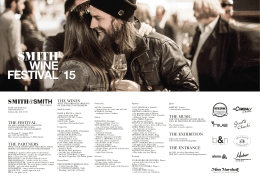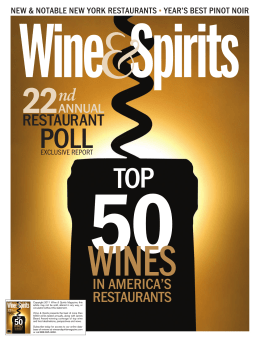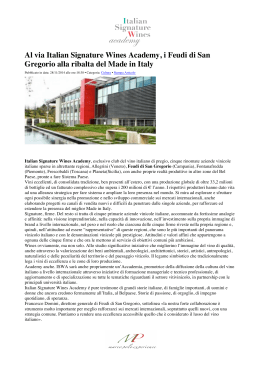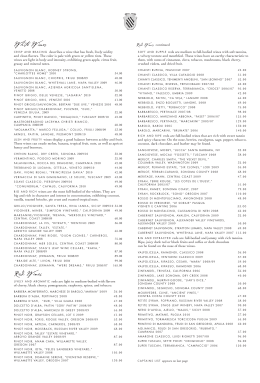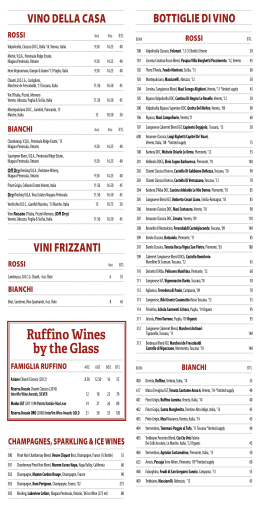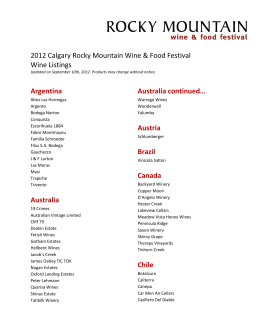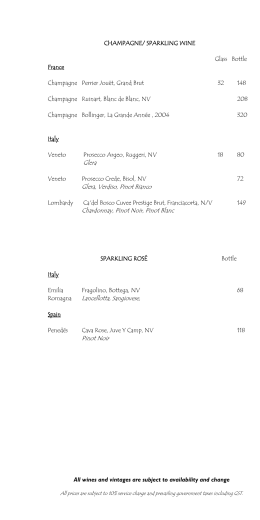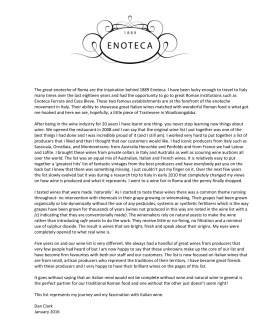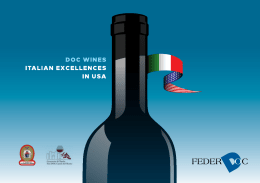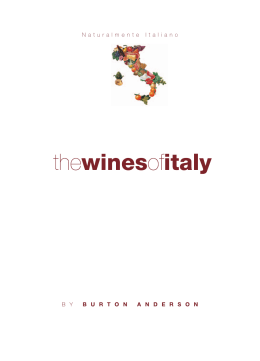Wines of Italy The Romans • Around 300 BC the consumption of wine was popularized by the Romans • They introduced props and trellises as growing aids • Discovered that aging wine gave it a better taste • Mixed wine with herbs, spices, salt water, even chalk Italian Wines may be labeled in several different ways • By region; like Chianti or soave • By the grape variety, like Barbera and Pinot Grigio • By a traditional name, which tells you absolutely nothing. You may see these labeled as “Est! Est! Est!” or “Vino Nobile” because that’s what people have been calling it for hundreds of years • By trademarked names, like “Rubesco” or “Summus.” Regulatory Designations for Italian Wine Vino da Tavola – Basic table wine, loose regulations on production. Vino a Indicazione Geographica (or IGT) – Wine from a specific location, also loose regulation on production. Vino a Denominazione di Origine Controllata • Abbreviated DOC • Strict guidelines on production, region, naming, bottling and classification. Vino a Denominazione di Origine Controllata e Garantita • Abbreviated DOCG • Same standards as DOC wines with the addition of chemical testing, and taste testing by a government official before the wine is bottled. Grape Varieties • Nebbiolo (in Barolo, Barbaresco, and elsewhere in Piedmont) • Sangiovese (Chianti, "Super Tuscans" and others) • Aglianico • Barbera (Barbera d'Asti and others) • Dolcetto • Malvasia • Montepulciano (not to be confused with Vino Nobile de Montepulciano (which is actually Sangiovese) • Moscato (which the French grow as Muscat) • Tocai Friulano • Trebbiano (all over the place, and in balsamic vinegar) Regions • Italy has many winegrowing regions, but three areas stand out for producing the finest wines of Italy. Tuscany • The region of Tuscany, around the city of Florence, is famous for producing red wines, primarily from the Sangiovese grape. The most famous wine from Tuscany is the most famous wine from all Italy: Chianti. Other famous Tuscan wines, including Brunello di Montalcino, Vino Nobile di Montepulciano, and Carmignano. There are also the non-traditional "Super-Tuscans," bold experimental red wines that are often highly regarded. Piedmont The region of Piedmont, in Northern Italy close to the French border, produces the greatest variety of fine wine in Italy. This is where the red Barolo and Barbaresco come from, as well as the sparkling Asti. Venice Lastly, the regions around Venice are well known for producing white wines, including Soave and Pinot Grigio. Food Pairing • Apéritifs and cocktails: Sparkling wines work well; like Spumante Brut or Prosecco. • Fish, seafood, pasta in cream sauce: Whites tend to be better here; try Bianco di Custoza, Chardonnay, Falerio, Fiano di Avellino, Frascati, Friulano, Galestro, Gavi, Greco di Tufo, Orvieto, Pinot Bianco, Pinot Grigio, Soave, Verdicchio, or Vernaccia di San Gimignano. • Poultry, veal, pasta in tomato or meat sauce: Light-bodied or medium-bodied reds are ideal; pour Barbera, Bardolino, Chianti, Dolcetto, Grignolino, Lambrusco, Merlot, Montepulciano d'Abruzzo • Game, fowl, roasts, red meat, and aged cheeses: Full-bodied reds are most suitable; serve Amarone, Barbaresco, Barolo, Brunello di Montalcino, Cabernet Sauvignon, Carmignano, Chianti Classico Riserva, Gattinara, Refosco, Rosso Piceno • Desert or Sweet: Sparkling or sweet wines, sometimes fortified, pair nicely; try Asti Spumante, Malvasia, Marsala Superiore or Vergine, Moscato d'Asti, Picolit, or Vin Santo.
Scarica
